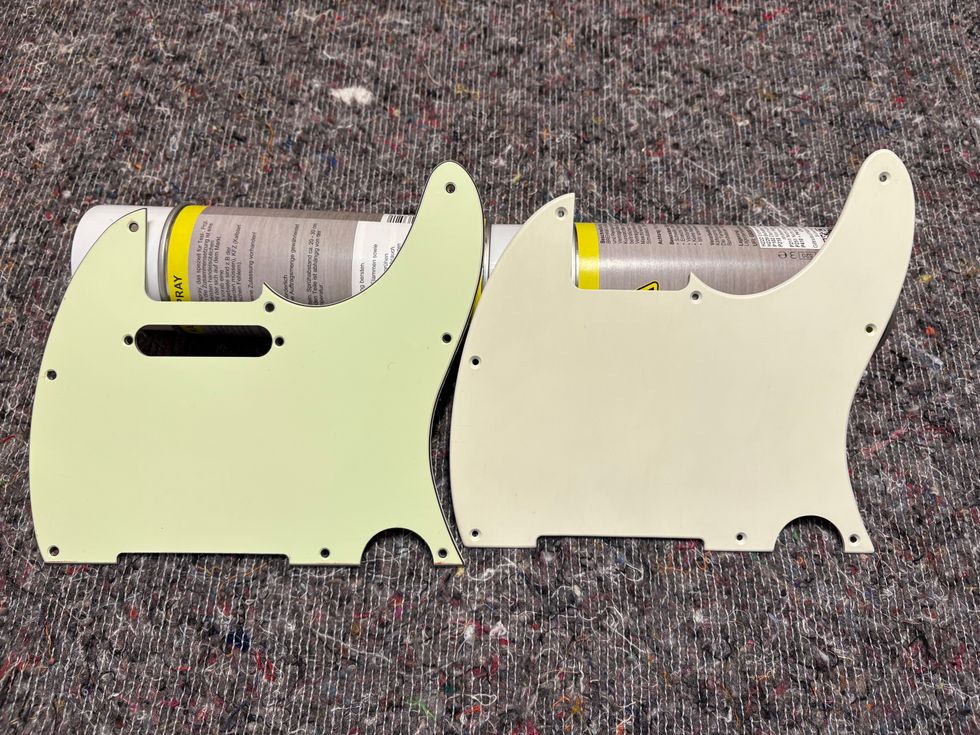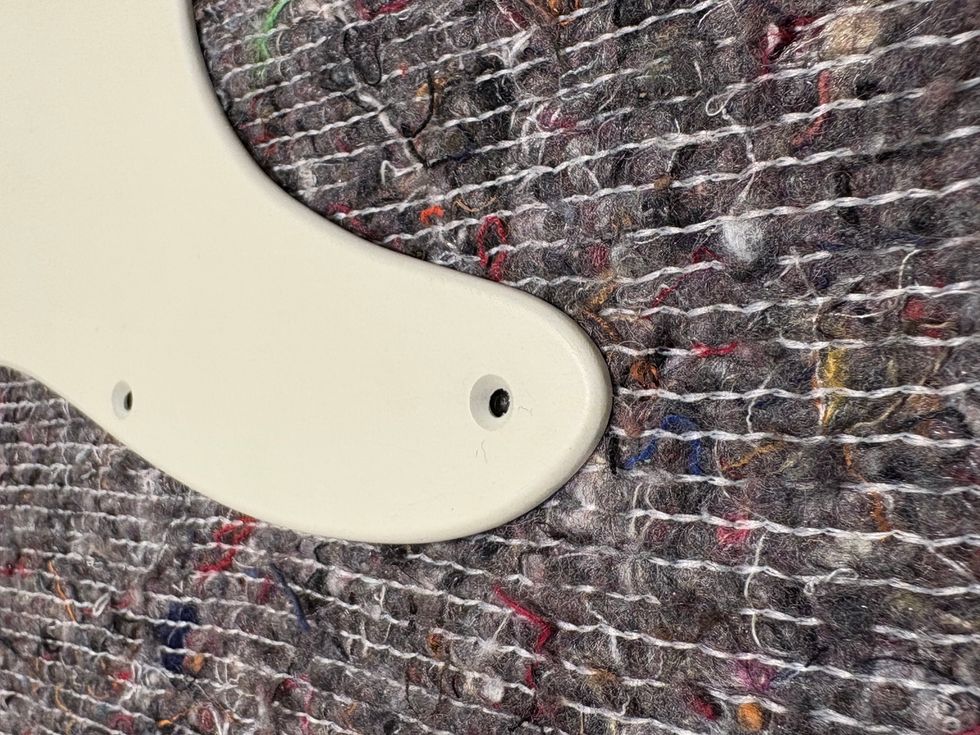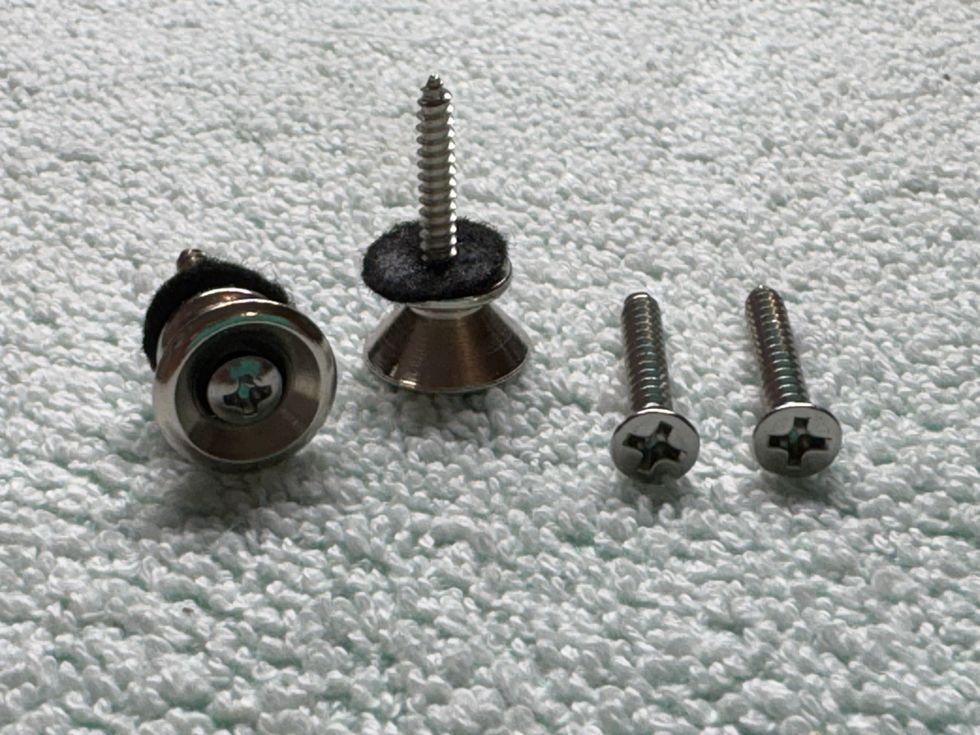Guitar techs love to talk gear. As we talked with our panel of expert techs to get the inside scoop on what it's like to be a touring tech [you can read last week’s feature “Gear Nannies – Life of a Guitar Tech,” here], the conversation inevitably shifted back to equipment. Thankfully, these purveyors of gear and repair are in a position not only to help artists reach sonic nirvana, but have agreed to share some of their wisdom to help in your pursuit of tone.
In the following pages, the techs share tips, tricks, and cautionary tales of repair and troubleshooting to help you avoid being at the mercy of the gear gods in the middle of your next gig. While you may already be familiar with some of the tips, we hope this gentle reminder can help you get back to the basics and remember that sometimes your tone and onstage comfort is made in the smallest, most miniscule things in your signal path.
Let's start by meeting our team of experts:
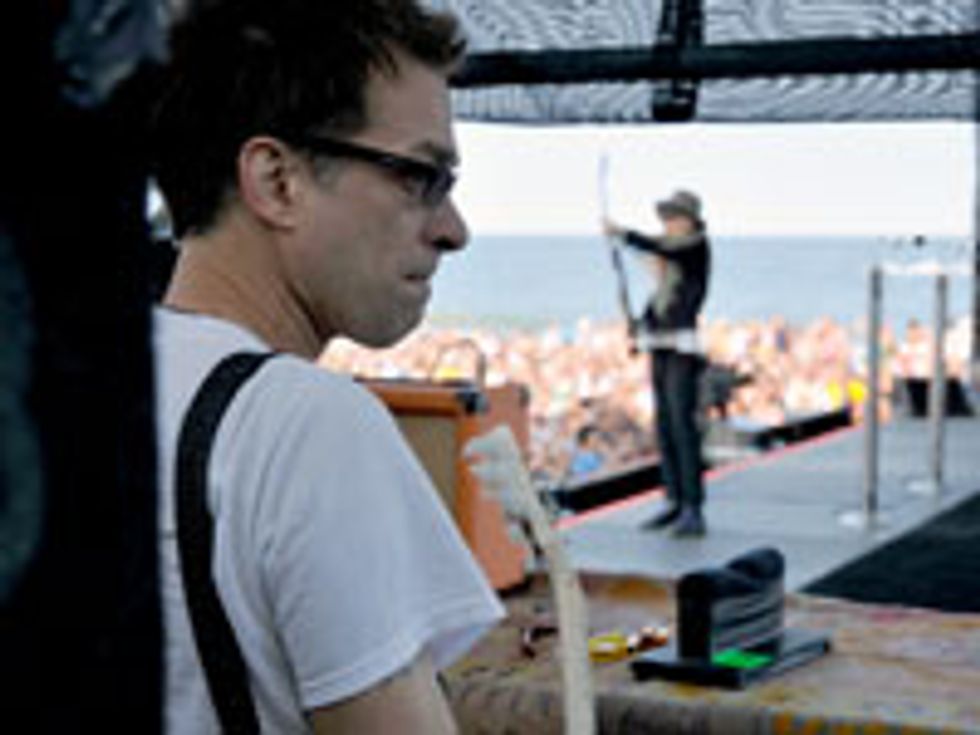 Elwood Francis
Elwood FrancisYears of Service: 28
Past Gigs: Joe Perry, Steve Vai, Puddle of Mud, Izzy Stradlin and Gilby Clarke [Guns ‘N’ Roses], Rich Robinson of The Black Crowes
Current Job: ZZ Top’s Billy Gibbons
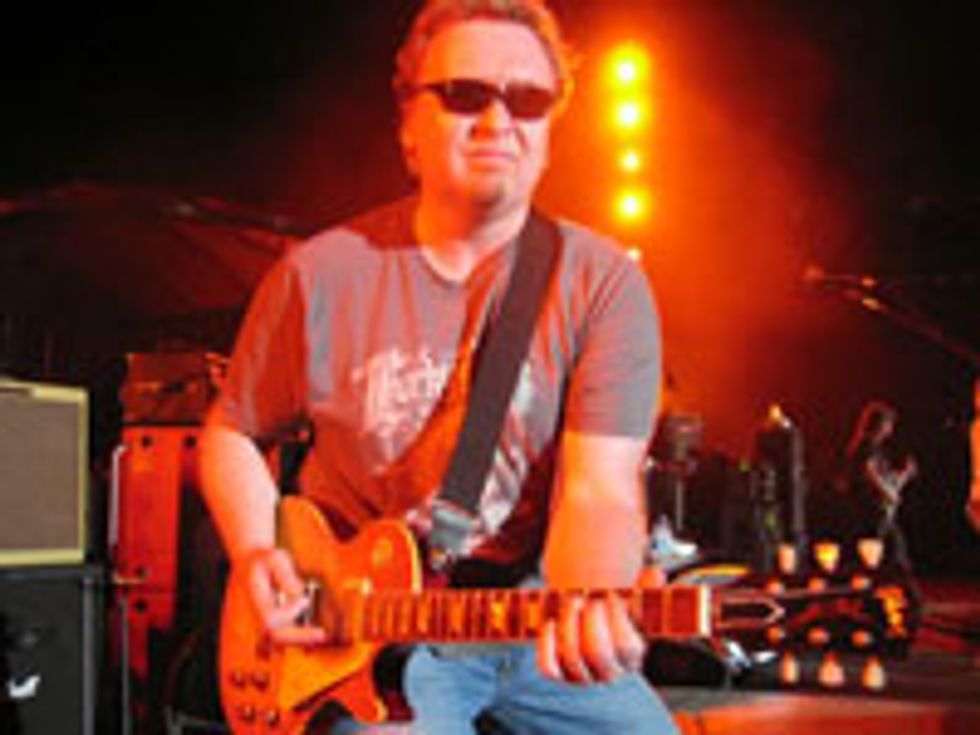 Scott Appleton
Scott AppletonYears of Service: 20 years, last 11 full-time
Past Gigs: Neal Schon of Journey, KD Lang, Styx, The B-52s, and Peter Frampton
Current Job(s): Def Leppard’s Phil Collen and Rush’s Alex Lifeson
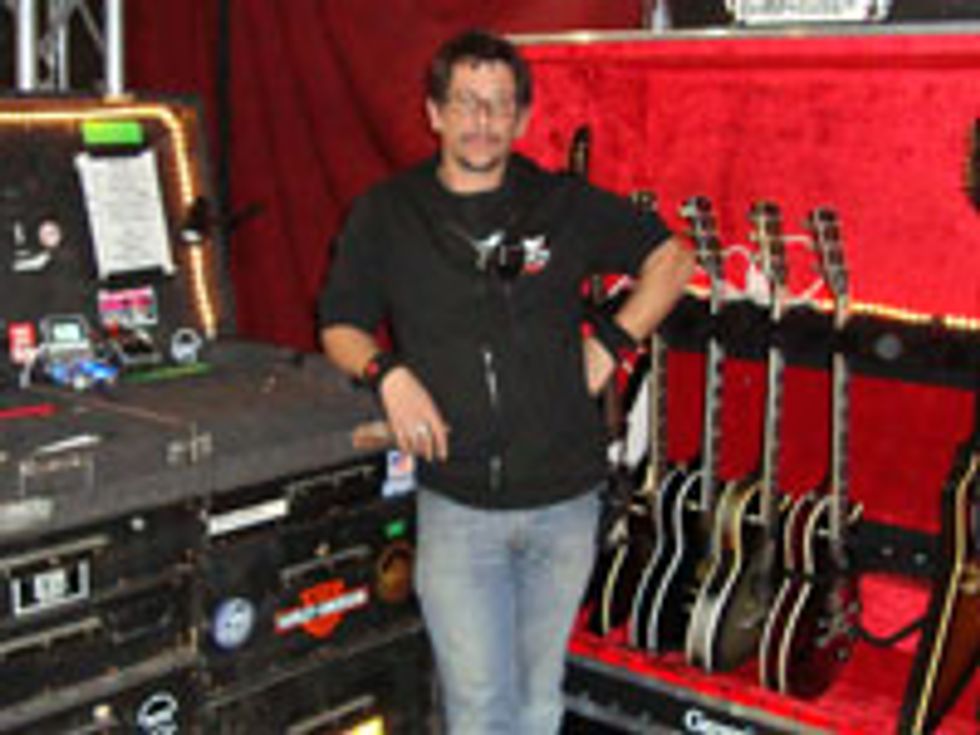 Warren Termini
Warren TerminiYears of Service: 24
Past Gigs: Blondie, Megadeth, Cold, Fuel, Clutch, Godsmack, Meatloaf, Extreme
Current Job: Bill Kelliher of Mastodon, Weezer
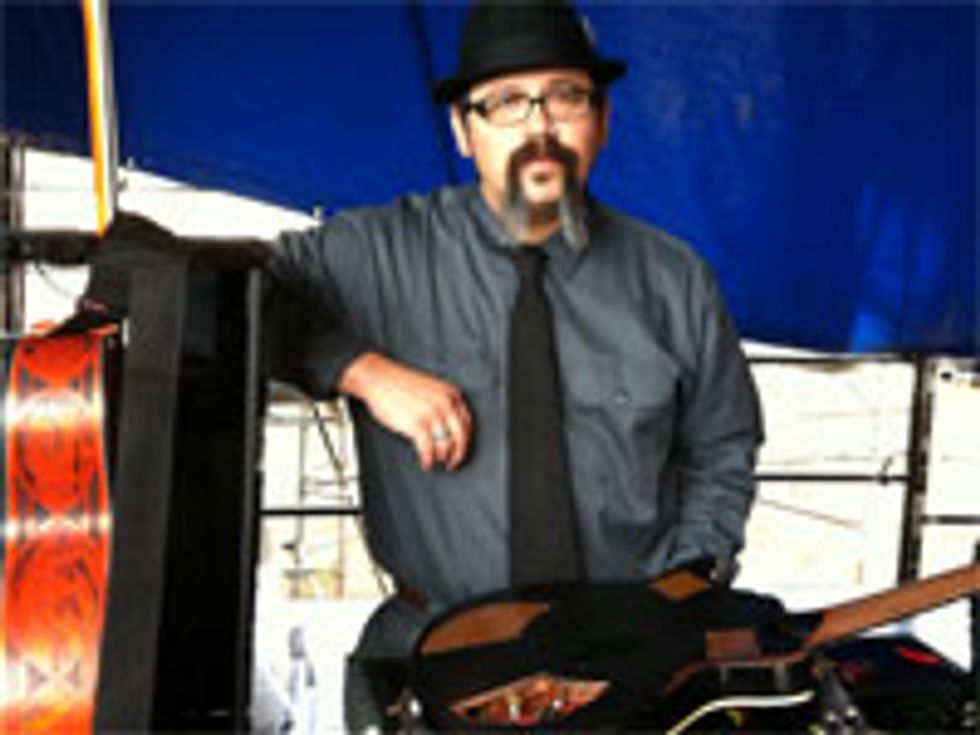 Enrique “Henry” Trejo
Enrique “Henry” TrejoYears of Service: 14
Past Gigs: At the Drive-In
Current Job: The Mars Volta’s Omar Rodriguez-Lopez,The Raconteurs
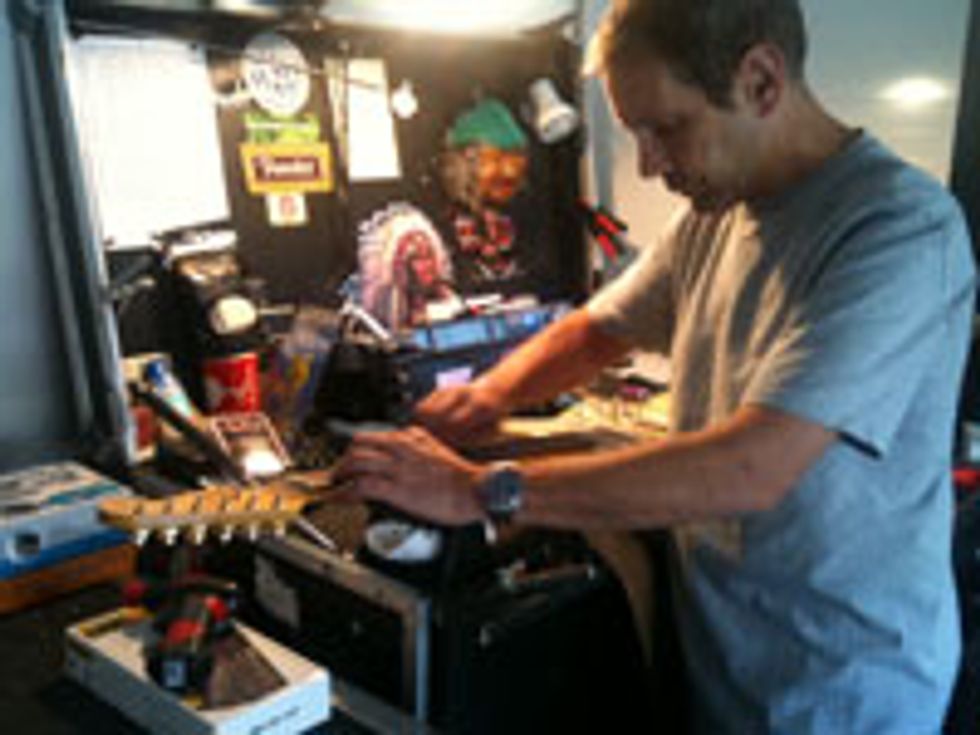 Lee Dickson
Lee DicksonYears of Service: 32 (’79–’10)
Past Gigs: Eric Clapton
Current Job: Off
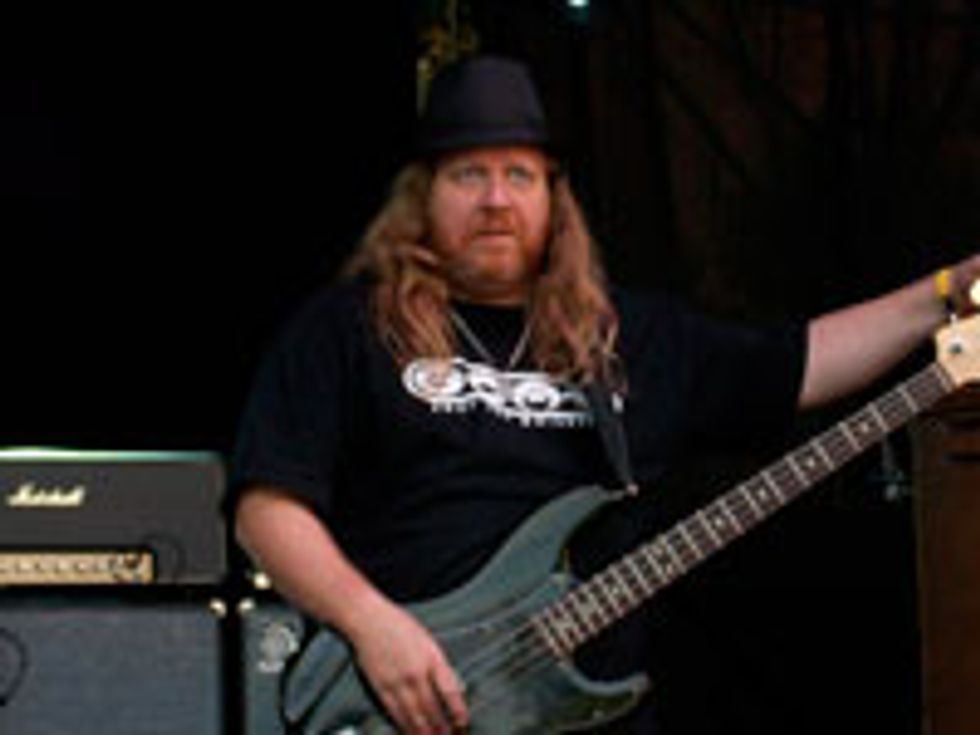 Brian Farmer
Brian FarmerYears of Service: 23
Past Gigs: Marty Stuart, Johnny Cash, Allen Woody
Current Job: Warren Haynes/Gov’t Mule
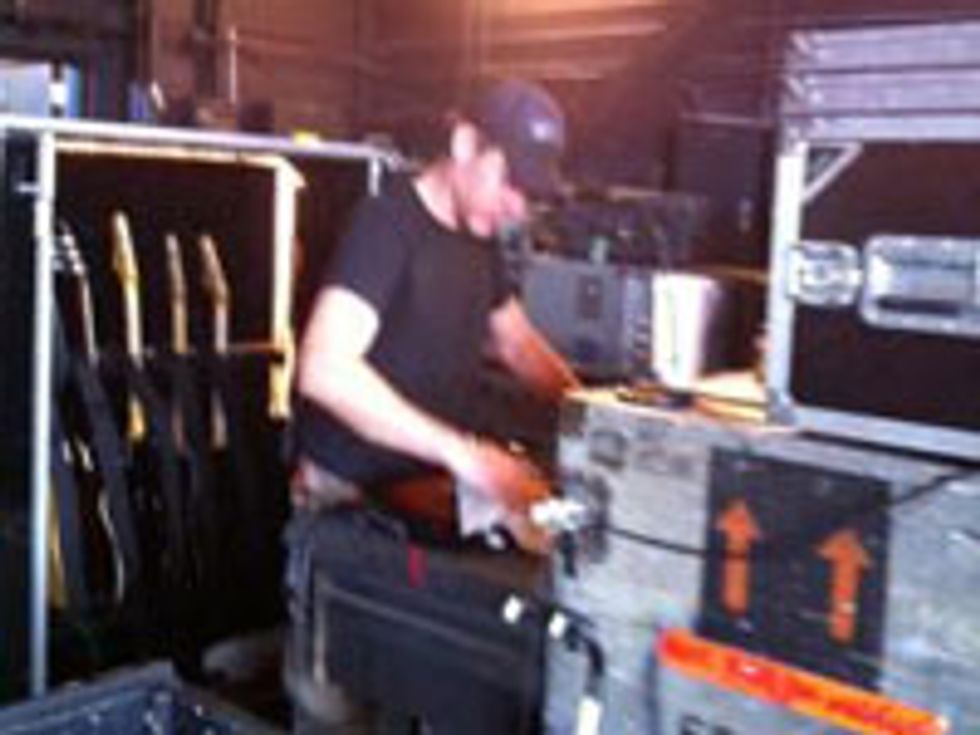 Mike Buffa
Mike BuffaYears of Service: 17
Past Gigs: John Petrucci and John Myung of Dream Theater, Vernon Reid, Stevie Nicks, Chris Chaney [Jane’s Addiction/Alanis Morissette]
Current Job: Maroon 5’s James Valentine
The Tips
1. Minimize string breaks and maintain intonation.
2. Respect the recorded tones and keep the tone consistent from room to room.
3. Prepare your toolkit for any scenario.
4. Have a backup plan.
5. Network for tonight’s gig and beyond.
6. Protect your tone—and your investment—with amp maintenance.
7. Mind your mics—or trust someone to do it for you.
8. Pay attention to pedal order.
9. Check the simple stuff when something goes wrong.
10. Whatever you do, don’t forget the most important part of setting up a rig…
Photo: Lee Dickson goes through his setup ritual on a Strat.
Francis: Billy [Gibbons] hasn’t broken a string in over 15 years—his long-running joke is that “you don’t want to be known as a string breaker.” [Laughs] I guess it’s just new strings and no sharp edges in the string path. I personally break them quite often when stretching them, but I really pull on them hard all the way up the neck. I check intonation from time to time but rarely have a drift. If a saddle does give me problems, I'll just use Loctite.
Appleton: You have to stretch the strings out completely—that means stretching everywhere from the first fret to the bridge. Follow this rule: stretch, retune to pitch, stretch, and retune to pitch until it stays in pitch at least three times. If the string breaks during this process, oh well—it’s better than happening to you during the gig.
Farmer: The main thing I do when I set up guitars is to keep things clean—I’m always cleaning the fretboard, the nut slots for the strings, the tuning pegs and the bridge. I stretch the strings as far and as much as I can and I check the intonation every day. I can watch Warren [Haynes]’s face and his hands and know if the guitar is setup perfect or if he’s struggling or fighting the guitar I can sense that in his playing.
Trejo: The method I use I actually learned from an old pamphlet and cassette I found from Doug Mark’s Metal Method. [Laughs] He takes the string through the post, bring it in towards you, over and under the string to create a sort of knot. This will essentially lock the string in place and help to avoid slippage. It can be a pain in the butt to undo, especially in a live situation where time is of the essence, so I advise having a good pair of needle-nose pliers close by.
Dickson: I always like to lube the saddles and the nut with [Big Bends] Nut Sauce, clean and polish the frets, and then put on a fresh set of strings after stretching them in well. Then, I check the neck, tuning again, pickup heights, and finish with one last intonation check. Eric [Clapton] had different action on different guitars, but for the live stuff with the Strats, they would come to us set up with pretty much whatever the Fender spec was and I would make some little tweaks and adjustments for him. There were a few occasions over the years when, at Eric’s request, I have had to adjust the action between songs while he played the spare. [Laughs]
Buffa: If you have a guitar your not using for lead—or not as much—and just using it for rhythm stuff, I’d suggest raising the guitar’s action a little higher because you can feel the notes ring out a lot better and longer and things just sound fuller.
Photo: Keith Urban marks the settings on his vintage Marshalls.
Appleton: One of the huge benefits of the Palmer Speaker Simulators [used with Rush] is consistent tone, night to night. They really keep things sounding perfect every time. Of course, I always mark the settings on each amp—just in case a knob should get bumped.
Termini: Cabinet placement plays a big role in Mastodon’s tone. The size of the stage and venue is going to make a big impact on where we’ll situate the cabs in order to get good, accurate sound and make the guys feel comfortable. The climate and venues are going to affect tubes, the amp’s performance, and guitar tuning. I mark settings on amps and pedals as a good starting point, but let the sound guys tell me where to go from there. The amp’s volume and gain is going to go up or down and if and when I will be opening and closing my noise gates.
Trejo: I always have my settings marked on amps, but leave it up to our sound engineer to dial the tone in the wedges. But, there have been a few instances where power from a club is low and just makes the amp sound horrible, so that’s when I’ll step in and try to match tones as close as I can. It’s all about trying to be consistent and keeping my players happy and worry free.
Dickson: When covering a big range of music or tones from a deep catalog, the settings will always fluctuate from night to night or tour to tour. With Eric, during the Soldano years Presence and Treble would vary day to day, but we’d always crank the Bass, Mids, and Normal Volume/Master. When we used the Twins, obviously they’d be pretty much set the same way every night—a lot less options on those! When it comes to chasing recorded tones, it’s so hard because of the x-factors that are only available in the studio during recording like mics, speaker cabs, and rackmount effects so I just tried to go with the guitar and amp from the recordings. Even if the band plays exactly the same chords, leads, breaks, tempo, etc., as the record it wouldn’t sound the same to the audience.
Photo: Mastodon tech Warren Termini's bench with Bill Kelliher's First Act Custom Shop prototype.
Farmer: A big help to my setups on guitars and being prepared is using Big Bends Nut Sauce or the Planet Waves Lubrikit that I religiously use on saddles and nuts of the Les Pauls for Warren. It’s a lot better than using KY, petroleum jelly, pencil lead, or graphite. [Laughs] Those two items save my ass all the time with ornery guitars.
I always have a Gerber or Leatherman multi-tool and a flashlight on me at all times. Those are probably two of the most important and most-used things while on tour. I have all the necessary tools and bright lights around my station, but so many times the problems you have on the road aren’t something that can be diagnosed or fixed at a station so I always tell guys to bring two of both those items.
Appleton: The usual collection of screwdrivers, string cutters, string winder, fret files, multimeter and Allen wrenches should all be within close reach. If you’re a serious road-warrior or aspiring tech, a soldering station is something to look into. I also have a drawer full of more eclectic tools such as a coping saw and some dental tools for fine handwork.
Buffa: An electrical tester is an underrated tool to have around the stand or with a band. There’ve been so many times I’ve seen things blow up or go wrong, whether it’s in the US with 110V or overseas, so testing power sources and continuity between cables and ohms in a speaker cab—the tester is a pretty basic tool that works wonders in safety. I’ve become the designated tester for the stage because I’ll run around and test each spot and give thumbs up before we turn anything on.
Never overlook the importance of a reliable, solid tuner [laughs], it’s a pretty important thing to have as a tech.
Francis: Strobe tuner, files, every possible truss rod wrench, clean polish clothes, and baby powder because it helps your hands stay dry in the summer heat, keeping sweaty handprints to a minimum. A note pad is important on this gig as Billy is always having me take notes during the show. Usually is about the show itself, or a guitar design he thought of, or sometimes it’s about hot sauce or a joke [laughs].
Trejo: I always carry a socket set, portable butane-powered soldering iron for quick fixes, a cable tester for quick reference, and I have a Black and Decker 7.2V drill that I attach a Dean Markley Turbo Tune string winder head to. Makes changing strings so much faster because it’s slotted for guitar and bass machine heads—it’s a must-have!
Dickson: When in doubt or think you might need it… take it! Two things to keep close by in a secure spot are spare amp fuses and a decent set of handtools. Pretty much order anything and everything out of the Stu Mac catalog and you’ll be set [laughs]. One of the best things I took for fly-date gigs or when we didn’t have much cargo space was an Ultrastand folding bench that would go into a briefcase—best unit ever.
Photo: Billy Gibbons' duplicate rigs ensure a consistency if something goes wrong in the main one.
Dickson: Provided that you have and are using a spare amp, a simple A/B box is a quick way to switch amps and keep your effects in the chain. When we toured I would always have two spare Twins on stage and a cord ready should we encounter any RF problems with the wireless packs or receiver.
Francis: If you use a pedalboard, you should have a “snake” with all the cables wrapped together running from pedals to amps. That should include an additional cable cut to the length of your longest cable, if you have a problem with any cable in the snake, your spare is right there. Also female-to-female 1/4" barrel connectors to bypass a pedal and spare male-to-male 1/4" jumpers because they can go bad without notice. Bring batteries in case the AC power is weird and the pedals are picking up grounding noise and little pig tails with battery clips for the pedals that have the a no-battery option. And always have spare cables and strings!
Appleton: The motto I currently live by working with Alex [Lifeson] and Phil [Collen] is “a good tech has a backup and a great tech has two backups.” [Laughs] Let’s face it—every artist does not have the budget for this way of thinking. Although you will never get all of them, try to think through possible failure scenarios and then prioritize what you need for backups. If anything, I’d suggest always having a spare amp, and an “Oh crap!” cable if you are using wireless units.
Trejo: Well, with Omar [Rodriguez-Lopez] I know that if something goes down it's usually his guitar cable because he’s constantly stomping on it during a show. I usually integrate a spare cable in his loom if that goes down. As far as his pedalboard goes, there’s a great little bypass pedal called the Keeley Looper. It allows me to bypass all or some of his pedals, depending on where in the chain you put it, so you can take the offending pedal out of line to be fixed and replaced.
Farmer: The most important things I have in my entire arsenal are Super Glue and gaffer tape—with that stuff you can build a house [laughs].
Buffa: I really enjoy having my Boss NS-2 in the signal chain. Sure it works great as suppressing unwanted noise, but it—and similarly-designed pedals—lights up when the signal hits it and works great as a built-in safety valve if the rig goes silent or haywire. We know if the NS-2 is lighting up, the issue is behind it. These types of things save tons of time… and in a gig like this, time is money.
Photo: Maroon 5 tech Mike Buffa (left) and guitarist James Valentine (right) get friendly with Matchless' Phil Jamison.
Appleton: When it comes to being a tech or aspiring tech—be observant and learn from other techs and players around you. If you don’t know the answer or how to do something, don’t be afraid to ask questions. Never think that you know it all—that is the day you should work at grocery store. When it comes to being a player, talk to everyone and shake hands because being friendly only helps you get you more gigs, open more doors, and add professional contacts.
Buffa: I can’t begin to think of how many doors and opportunities have been opened for my career and me just because I went up to someone and talked to them about gear or guitar. It seems so simple and trivial, but whether it’s getting gigs when I was in a band, meeting one of my current best friends [former Mesa/Boogie rep Mark Snyder] because I had problems with an amp and he was the company’s rep, or talking to other techs while at gigs and festival and lining up other jobs that way. I can tell you how and when I got every gig—it might not happen when you meet someone, but people know people so be personable and meet as many people as possible.
Francis: It all started for me when my brother and I piggybacked off his success. He was mixing front of house for the Joe Perry Project in ’83 and I just got to know Joe because we always talked guitars. At one point he needed a tech and because we had covered the topic so much, Joe approached me about tech’ing for him and I’ve been doing it ever since. [Laughs] He trained me pretty well. If nothing else, don’t be afraid to open doors for yourself and just talk shop with people—you’ll never know who’ll you’ll get connected with.
Trejo: Always be willing to help someone out—even if it’s not your job or it’s an opening act—it could pay off. For me, I was in El Paso, Texas, watching my friend’s band called At the Drive-In. I was one of five people in the club. I remember seeing Omar flailing onstage and then he broke a string. He grabbed his only backup and broke a string on that one, too. He started to change the string in the middle of the song! [Laughs] So I decided I had to step in and help him out. After the show, the thankful guitarist asked if I’d come to the next show. And I’ve been right there for him ever since—14 years and counting.
Photo: The warm glow of tube tone in an Orange Rockerverb 50.
Trejo: I like to make sure all my inputs on my amps are clean with some DeoxIT gold contact cleaner. I also like to do a simple tap test on tubes to make sure they aren’t faulty—take a pencil and have your amp fired up and idling in Standby. Tap your tubes one-by-one. If you don’t hear it coming through the speakers then it’s good to go. Plus, preamp tubes are usually the culprit if you're having tube-related issues.
Dickson: We carried a really good voltage stabilizing and regulating transformer for all the backline. Never take a day or gig for granted—check tubes regularly, and just keep an eye on them throughout the night… even when going to the bar for a beverage [laughs]. And one thing I always checked—and thankfully a few times—is the speakers in cabinets and that they’re fully intact and attached to the baffle. That’s a total tone killer [laughs].
Termini: I check for broken glass or lose valve covers, loose missing knobs, or anything else hanging on or off from the last show. I wipe out dust and try to keep things pretty covered up on some of those outside festival shows or just dirty gigs. If your amp is going to be hanging around these stages, you might want to have some covers for this stuff like space blankets, cheap pillow cases, and everyone’s favorite, festival towels. This can keep the gear cleaner and save you time by not having to clean it out later. Having some good bits and pieces of that heavy military plastic Visqueen. You don’t have to carry around a big load of it, just pedalboard size and for the amp rack and guitar boat—it’s great for keeping things from getting too cold or wet.
Farmer: When it comes to taking care of amps, I implement a housewife mentality—I clean, dust, and wipe everything off every day. I use several different paintbrushes to clean out all the nooks and crannies of each amplifier shell nearly every day. Something I do that Warren rolls his eyes is when I exercise the pots and switches every night before the show. I always make sure the power tubes are seated because if the power tubes aren’t happy the rest of the amp of isn’t happy.
Buffa: I’m super anal to the point where I’m always using cans of compressed air, sweeping the stage and his pedalboard, and wiping down his amps and tubes. I feel the best defense or insurance policy on the gear is to be proactive cleaning it.
Photo: Like many guitarists and techs, Buddy Guy doesn't leave mic'ing up to chance, marking the cabs with electrical tape.
Francis: ZZ keeps a low stage volume and Billy plays through two isolation cabs offstage—one with a Heil PR 30 at the edge straight on, the other with Heil PR 40 in the same position. Billy is old school, no in-ear monitors and just two small wedges on each downstage edge—he knows every day is going to be different and thinks that's what rock and roll is all about.
Termini: I leave the selecting of mics and their positioning to the sound engineers. However, I do work with them to try and figure out how to get my rig to sit well in the mix. It can sound great onstage, but won’t translate well out front. I will also ask how my levels are and if there any frequencies jumping out at them hard and are my patches balanced. With Mastodon we run a lot of cabinets, and it can get pretty huge. In some of the smaller places we cut down on cabs or move them around to not cream the sound guy with guitars.
Farmer: I don’t do a lot with the mics or mic’ing before shows, but one thing I see and appreciate from our FOH engineers and staff is that they don’t EQ the amp to the room really, but instead they just use various mics and move them closer or farther from the cone depending on the tone or brightness of the sound coming through. It’s definitely the hard way to do things instead of mic’ing it on the cone and turning down the Presence or Bass a little, but it really shows in the end product because Warren’s tone is so identifiable and we have things pretty dialed in.
Appleton: I haven’t used a mic in five years. Palmer Speaker Simulators have been the go-to audio connections for the artists I have been working with recently (PDI-03s and PDI-05s). But when I have to, it’s always a combination of the old trusty [Shure] SM57s and, if you have the isolation, Royer 121s.
Buffa: We used to run everything in the front of the stage—two 2x12 extension cabs, one for each amp, but now we run the cabs facing the back of the stage and the Divided by 13 is mic’d with a 57 and the Matchless Independence 35 is mic’d with a Royer R-121 and is controlled by the sound engineer and FOH. Tonally, it clears out a lot of the stage volume so the in-ear monitors can effectively work better for the guys when the show is happening.
Photo: Maroon 5 guitarist James Valentine's board is so packed, the ordering of the pedals is an important consideration.
Trejo: I like to keep certain pedals, especially loopers like the Line6 DL4, in front of the chain because you can loop everything that’s in line and just create massive walls of sound. Anything that has any sort of gain boost like distortions and such I always keep at the end to minimize unwanted pedal buzzing. At the end of day, it all depends on what the guitarist is looking for.
Farmer: I like to put a wah at the beginning of everything, and then I like to use envelope filters and octave pedals hit and unaffected as possible because I feel they need the most organic sound possible for performance. Then I put the boost and overdrive pedals after all that, the delays follow those, and the Rotosphere is at the very end just because it’s a great but noisy unit.
Buffa: One thing I try to always remember when building racks is to keep the connector wires and AC/power wires separate—starting down the right side of the rack with amp to amp and processor to processor—to keep them from even getting close to touching because they could cause noise and grounding. I’ve found when you put everything together and run it over top of each other the cluttering of wires and cords can cause avoidable, unnecessary noise. Always keep signal and power separate for the sanctity of the signal.
I prefer to put the wah before the distortion and overdrive pedals—we tried it after, but the tone of the wah was a lot more coherent before—and then all that goes into a buffer to boost the signal, which runs into a Boss NS-2 Noise Suppressor, and then into a Rotovibe, then into the Volume pedal, and then into the delay, which goes into the switchers.
We like having the Volume pedal after the distortion pedals so when you bring up the volume on the pedal, you’re not cutting the volume and the dirtboxes, thus killing the dynamics of the overall distorted tone. If you placed the volume pedal before the distortion you would be able to dial back the volume and keep your big, thick, distorted tone because it’ll sound super sound, less dynamic and anemic.
The NS-2 is before the Rotovibe and DL4 Delay because I try to keep things as open as possible. I don’t normally have to squash his sound all that much because it’s pretty clean, but there are some venues where the power sources are noisy. And if you had that behind the delays, you could end up cutting off some of the trailing delays or ringing chorus effects from the Rotobvibe.
I’ve had James [Valentine]’s Dunlop Rotovibe, Zakk Wylde Signature Crybaby wah, and everything modded so they’re true bypass [laughs]… because it’s all about tone. By the time you go through five pedals and get to your amp, your guitar’s tone is almost indistinguishable because you’re running through all the circuitry of the pedals—even if they’re off—it squashes it and changes the organic tone you start with. If it’s true bypass you’re not running it through the pedal, you’re just running it from the in and the out. Secondly, if a pedal goes down and it’s not true bypass, it kills the whole thing, but if you turn it off and it’s broke, you at least can get the signal all the way through it and carry on through the song or show.
Photo: No sound? Before tearing apart the rig, check to make sure the guitar cable is firmly in place.
Termini: Power and levels are often overlooked when rushing in to set up a rig for that night’s show. Ask yourself, “Does it have power? Is the little red light on? And is the volume turned up?” These are three questions that will save a lot of troubleshooting and avoid stress.
Francis: Once you know the rig inside and out (which takes time) you can usually tell where the offending audio "gremlin" is festering. You just have to use your ears and listen. I can be obsessive and make new cables for a total rewire quite often just to know they are all in top condition. I always make my own cables and make cut to length, everything stays neat and clean.
The biggest bummer we have is the fact that we hit the EQ in our FX loop really hard and it gets noisy sometimes. To get it quiet I always start with the wireless—putting it through an ISO transformer usually does it, or maybe in the loop after the EQ. After I get it fixed I go complain to the lighting guy about his lights making the guitar noisy. He laughs at my peril then I go tell Billy that it's a bit noisy and where the big trouble spots are on stage.
Trejo: If I have no signal, I usually start with the guitar and cable. I know this sounds stupid—sorry guitarists—but sometimes a player will put his guitar on expecting it to play as soon as he puts it on. Check your volume! [Laughs] Next I’ll work my way through the signal chain—a lot of times, the issue is a jack on a pedal that has gone bad due to travel or just the gear gods punishing you.
Dickson: They say that generally the most problematic thing in the chain is the guy playing guitar [laughs]… although I was pretty lucky with Eric. These days wireless can sometimes be problematic in certain countries and venues, so I would always have a cord ready to switch to just in case the wireless system went down for any reason. It’s always a good idea to take care of your cables, cords, and leads as they are often easily damaged and can be the weak links in any signal chain.
10. Whatever you do, don’t forget the most important part of setting up a rig…
Termini: This will sound ridiculous, but having all your stuff plugged in all the way [laughs]. I really can’t stress this enough. I’ve torn apart rigs only to find that things weren’t plugged in all the way. Check and make sure all your AC power blocks and pedal power supplies have good batteries, and then find a great place to plug in your main AC power supply so you have the cleanest power possible and it won’t get kicked out by a wandering stage hand or security.
Trejo: For me it’s intonation—I’m a stickler for trying to get intonation as perfect as I can. I’ve had some pretty good battles with some guitars, but in the end, I usually win [laughs]. It’s one of those things, if you’re not in tune, to guitar players in the crowd, it’ll sound like nails on a chalkboard no matter how great the guitars, amps, and pedalboard.
Dickson: I’d have to say clean nut slots, stable neck, clean saddles, and if possible, an intonated guitar. From all the tours I did with Eric and one-off shows across the world we fly into, we never knew sometimes what we’d have for amps so if I could keep the guitar, consistent and familiar, a good guitarist—which I think Eric is [laughs]—will be able to handle the rest. Oh yeah, do not tie knots with cables—that’ll just lead to issues down the road.
Buffa: Solder joints and input connections are some of the littlest components in a rig, but are of the biggest importance so I’ve learned to love soldering. Even if a rig is up and running or everything appears to be ok after a pedalboard has set for months, I’ll investigate all the connections and heat up the soldering iron—I just have a little more piece of mind knowing everything is 100 percent connected and tone isn’t being lost.
Farmer: Comfort. Trust me, whether it’s me playing or if I’m tech’ing for Warren, it comes down to comfort. I could tell you a big list of things to check and double-check, but ultimately those things all add up to comfort. If you’re relaxed and feel good, you’ll perform at your best no matter if you have a $300 First Act or a Custom Shop Les Paul. Get in the pocket, crank up the guitar, and have some fun—that’s what playing music is all about no matter if you’re playing for ten people or ten thousand.



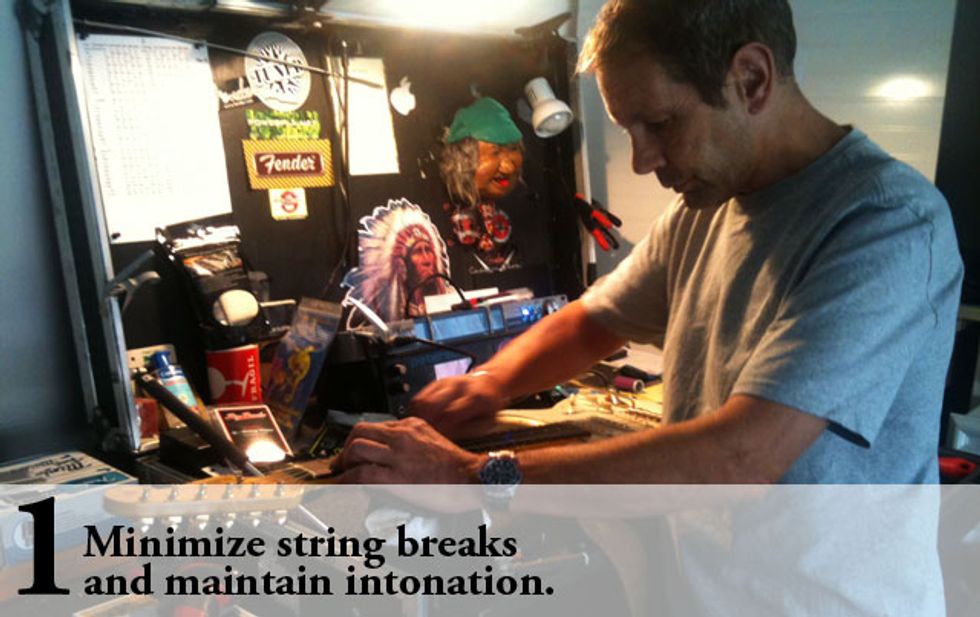
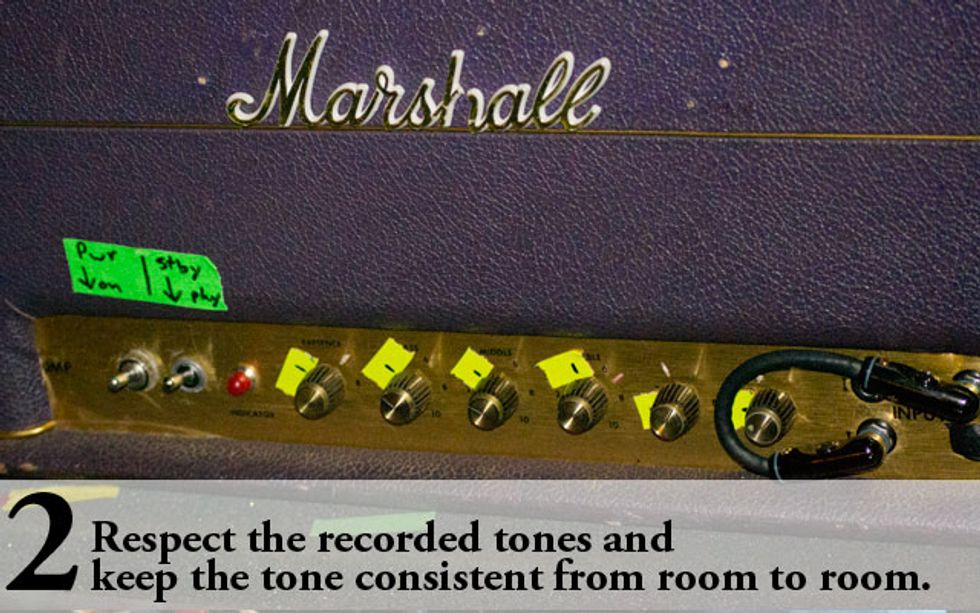
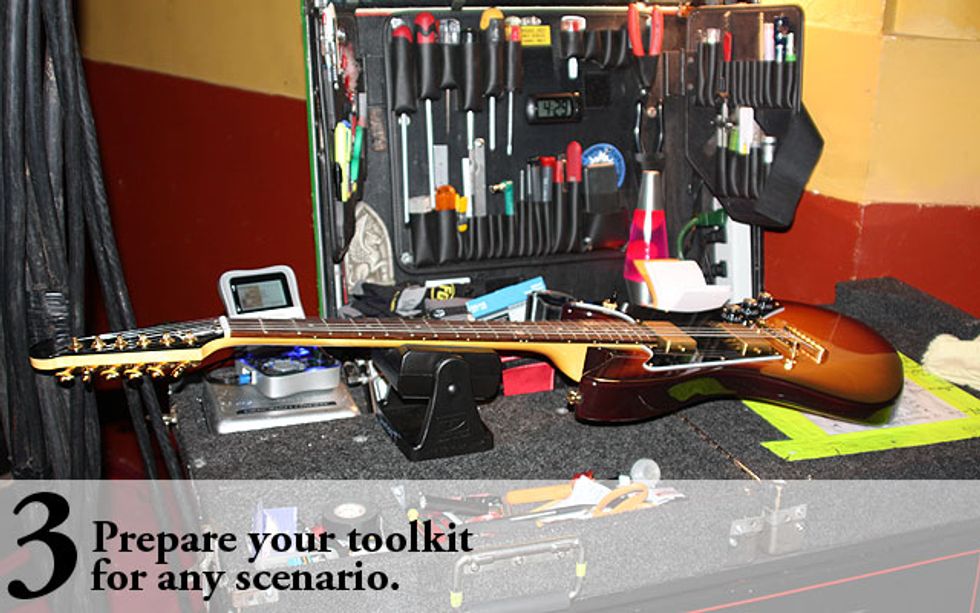
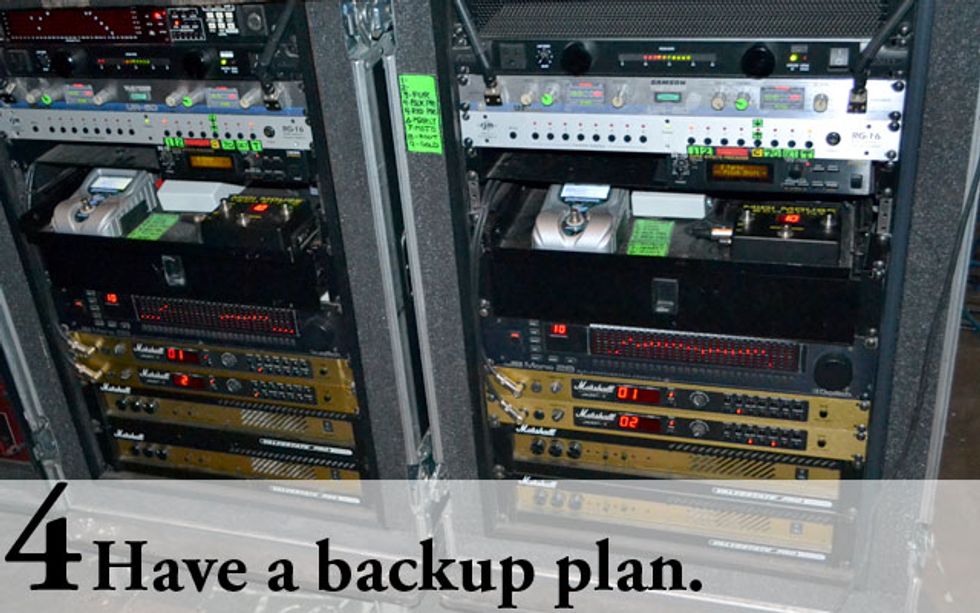
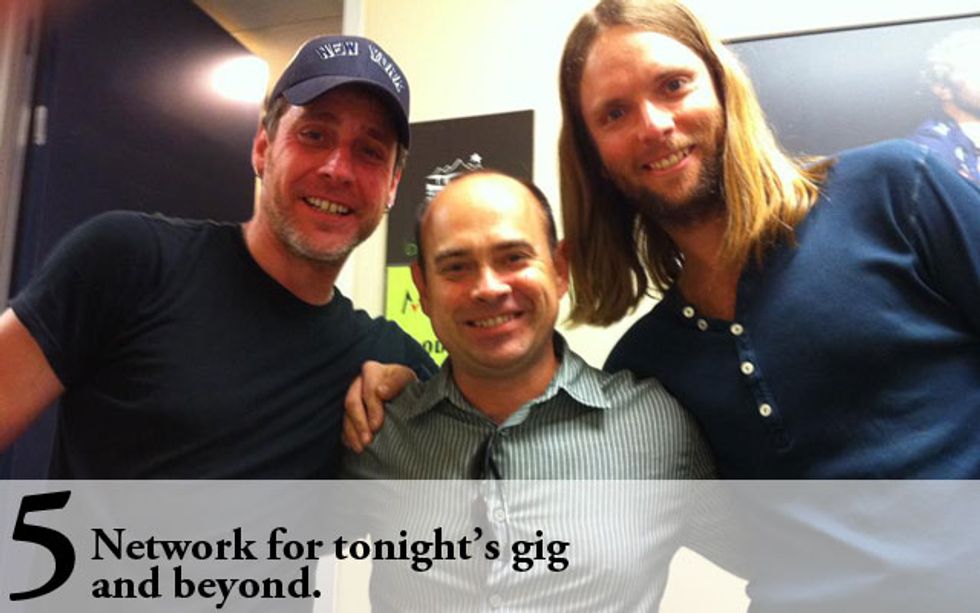
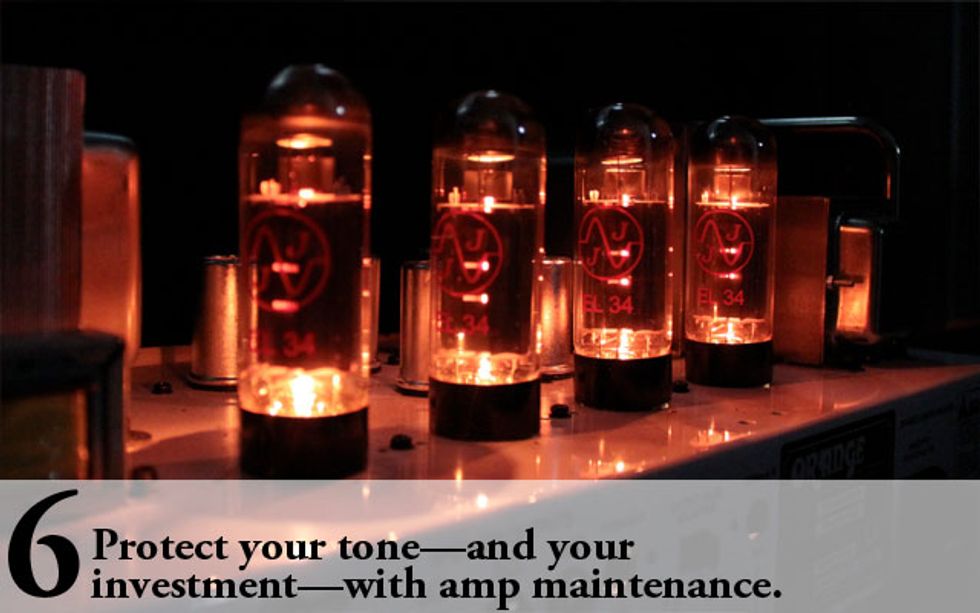
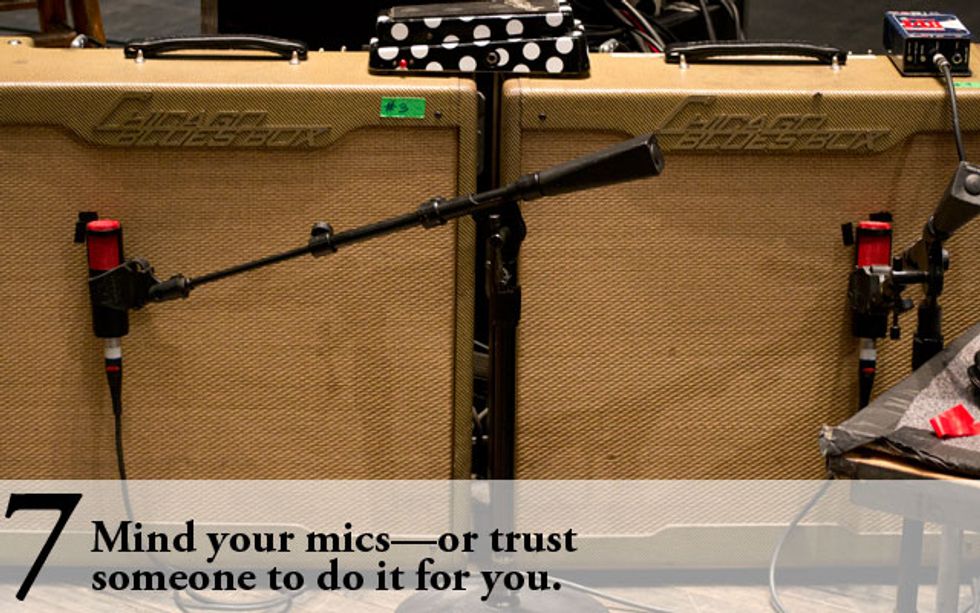
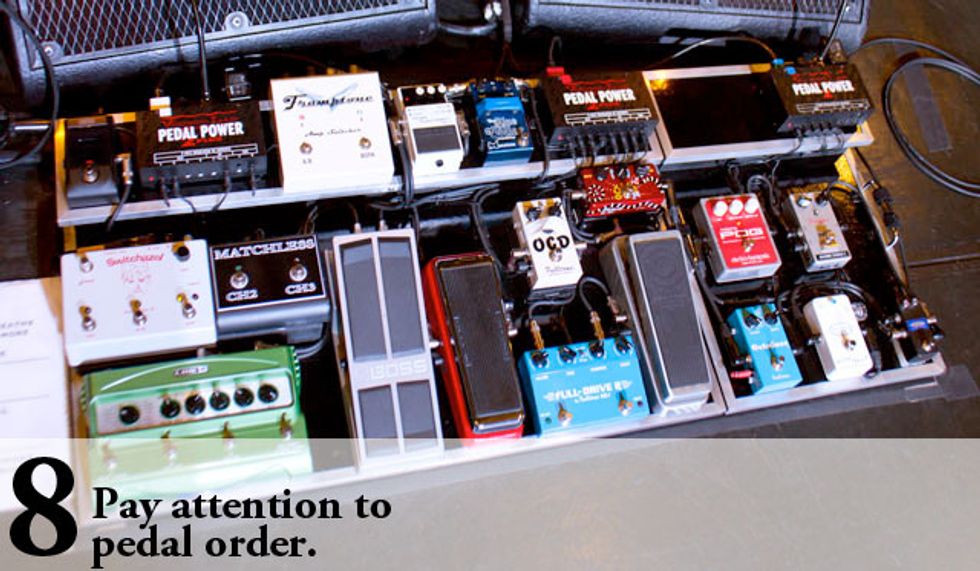
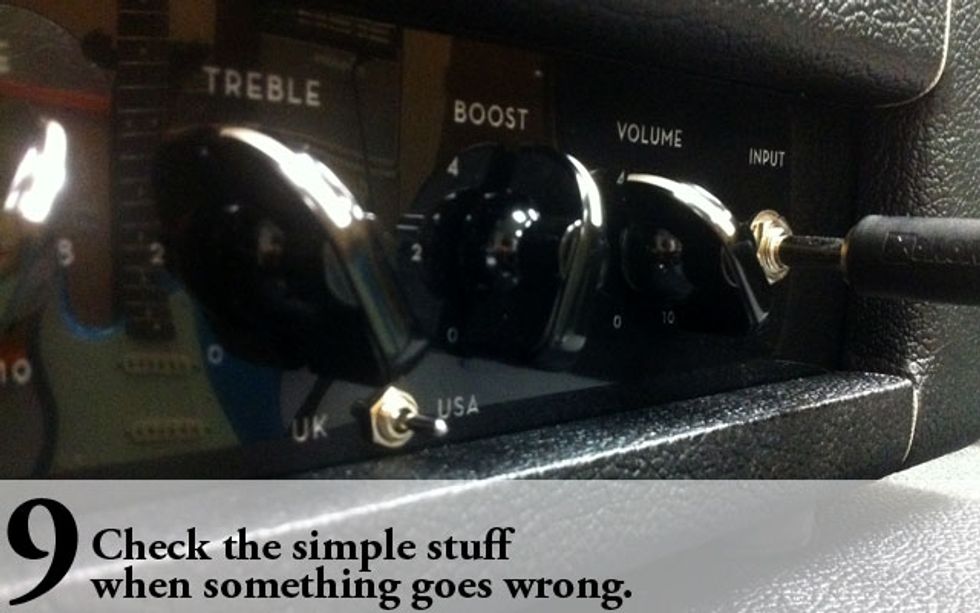
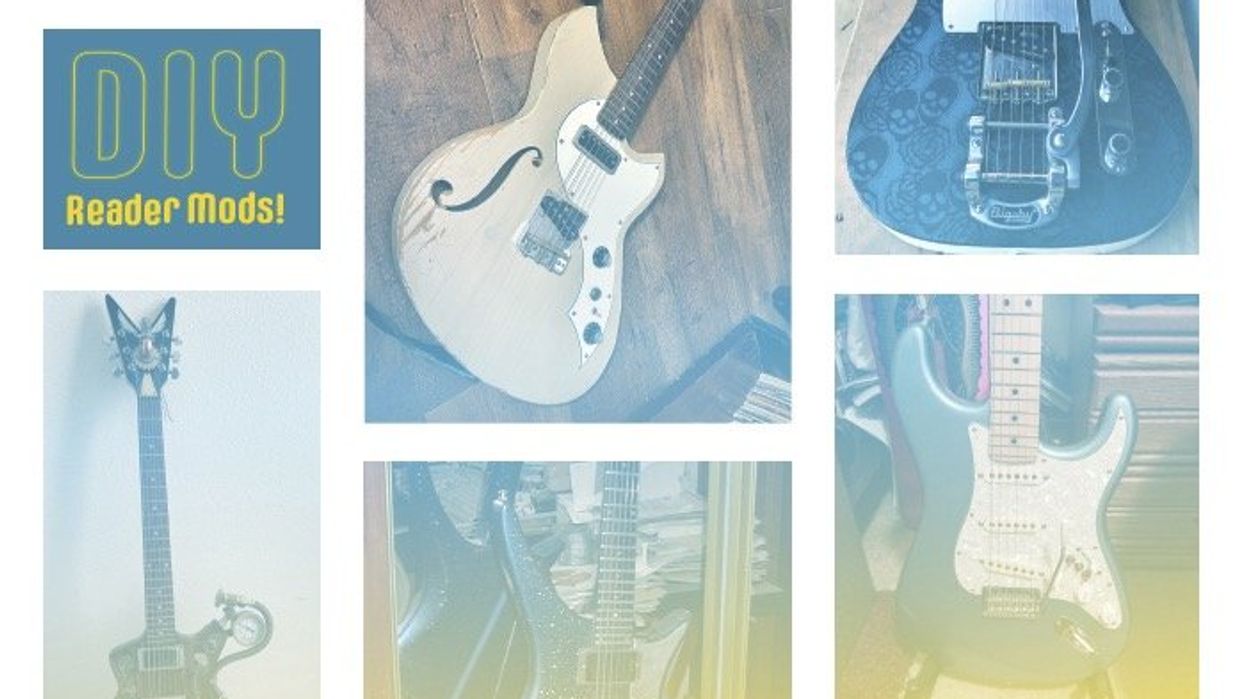
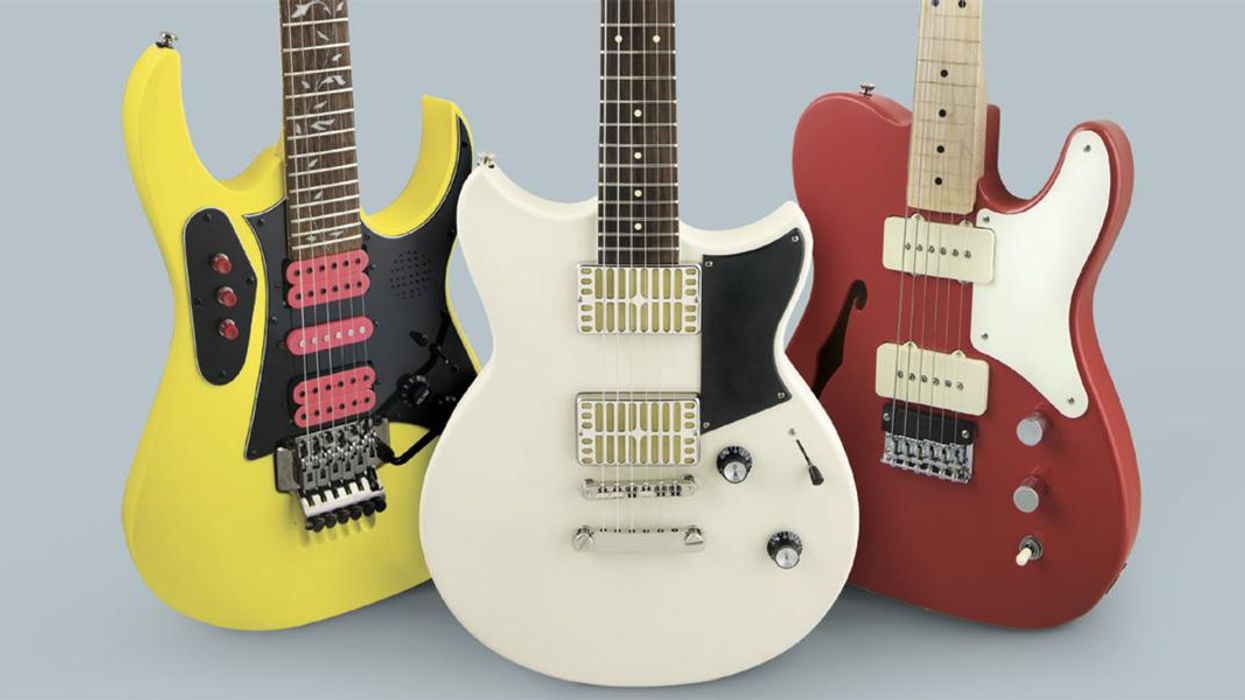
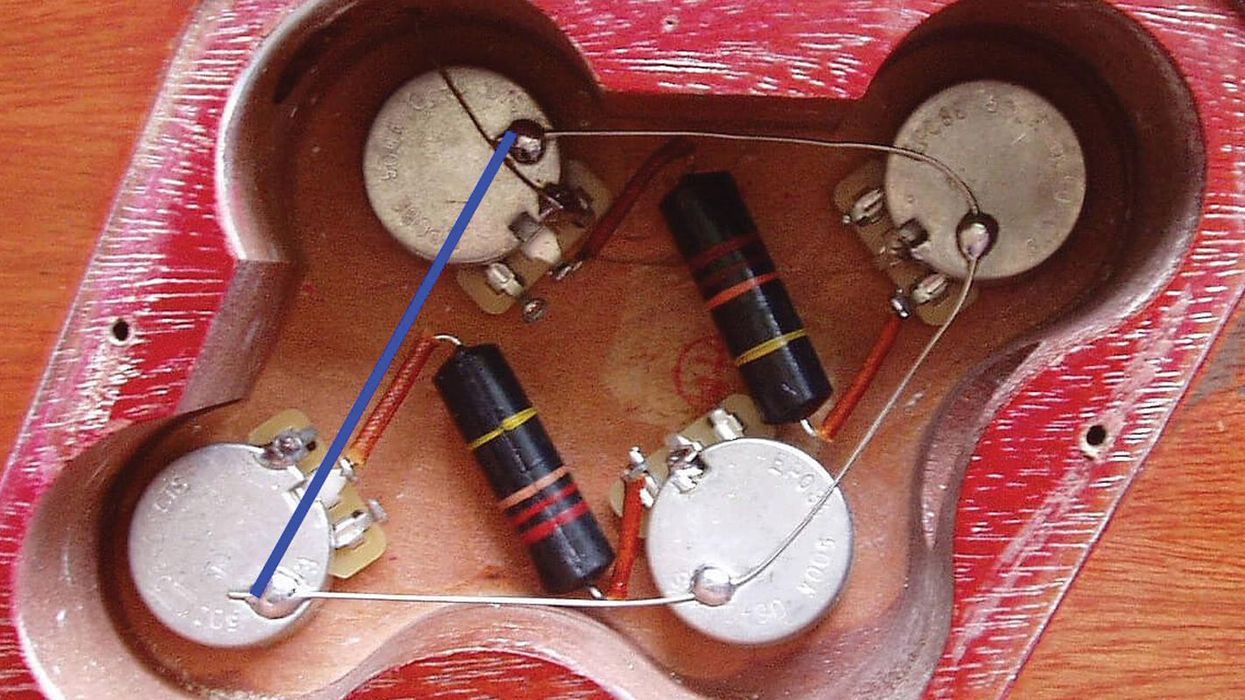
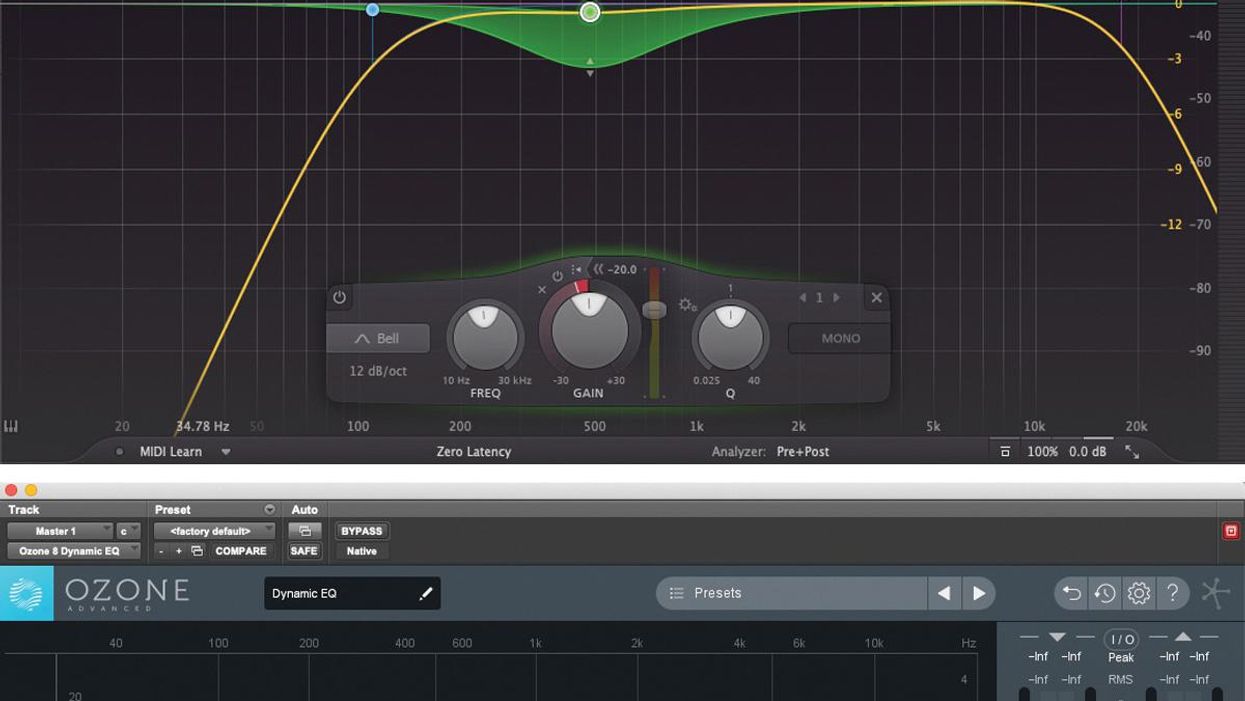


![Rig Rundown: Russian Circles’ Mike Sullivan [2025]](https://www.premierguitar.com/media-library/youtube.jpg?id=62303631&width=1245&height=700&quality=70&coordinates=0%2C0%2C0%2C0)





